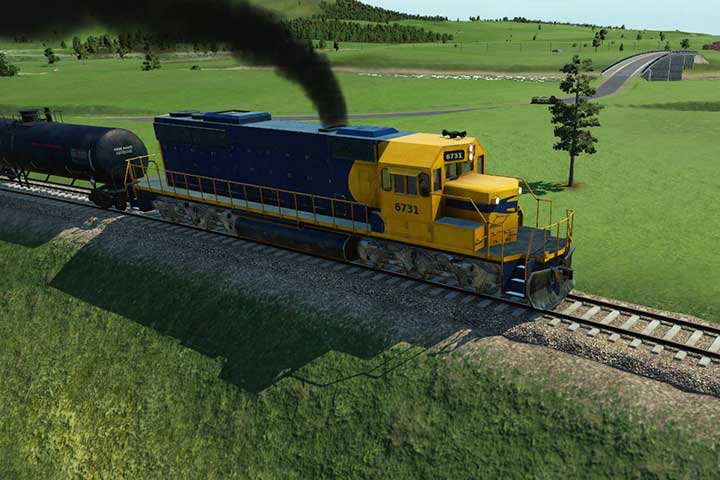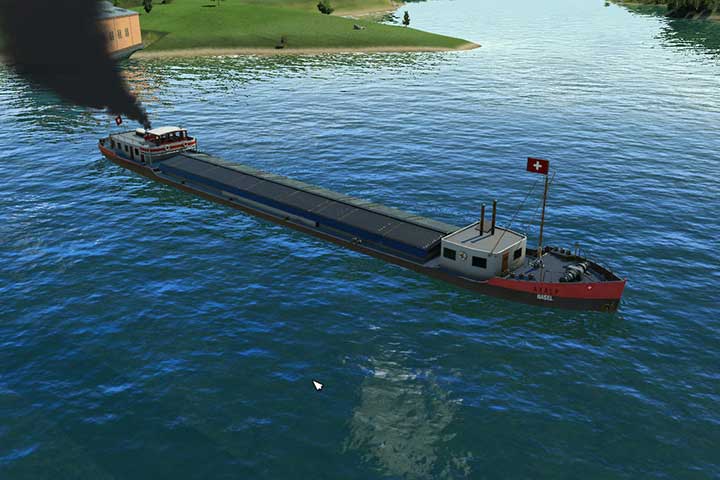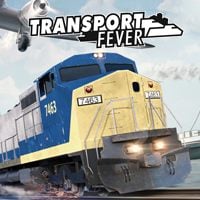Transport types
There is a very sizeable choice of vehicles and machines used for transport purposes before you. Each of them has their own pros and cons. Some you will use more eagerly, while others will discourage you, however, it is worth creating a network of various lines and machines, so that the profits and effectiveness of your enterprise are at their maximum.
Trucks, buses and trams

A particularly useful mean of transport, primarily for short distances, given time it also gains advantages on longer routes. At the beginning trucks and buses are quite inexpensive, just like their upkeep costs, they also can be faster than other means of transportation. After some time the prices will rise, but this will still be the cheapest way of transporting goods. In the later stages of the game, the vehicles will become much faster. Increasing specialization can be an advantage, as well as a flaw, of the newer models. The first models of truck will be able to transport anything, so there will be no issues with assigning them to more complex lines. Building roads is also not that expensive, and curved or uneven roads do not affect the effectiveness when it comes to speed, which is not the case with trains (they accelerate quickly, but they have a lower maximum speed).
Many maps have an existing road network, not just between cities, but also have access roads to many production facilities and factories. Usually, a few trucks is enough to maintain a city or a production chain. They are perfectly suited to distributing goods to many separate, smaller locations. An obvious drawback is the low capacity, and for the vehicles which operate in cities, traffic jams and large traffic density are a nightmare. The situation can be semi-solved by introducing bus lanes, however, trucks still need to combat the existing traffic. Building transport stations on the outskirts of the city, and creating a separate road to it, could be a solution to the traffic congestion problem. Another flaw of this type of transportation is that it demands a lot of micromanagement, especially if you want to assign a lot of vehicles to a different line or sell them.
Railways

Many players consider this to be their favourite type of transportation. Large capacity, speed, the ability to assign different types of carts to the train, are all advantages of railway transports. Thanks to that, they can transport large quantities of goods on very large distances in an acceptable time. They are often the driving force of your enterprise and bring large profits. The drawbacks are high purchase costs and high upkeep on carts and engines. Trains often yield losses at the beginning, before they reach their maximum effectiveness. It is worth using them on longer routes, in order to maximize their potential.
Another drawback is the need to build the entire railway system, which can be very costly. It is best, if the route is made out of many straight and flat sections. If the terrain is hilly and not at all plain, than it might be best to reconsider the use of this type of transportation, as it may prove to be too costly. However, another advantage is the ability to create a two-way track by using signalling and a second, parallel rail thread. You can then use more than just one train on a given track and therefore increase the effectiveness of a certain railway section. Generally, it is worth using this option, but not overly so. It works extremely well when combined with conventional road transportation.
Ships

At the beginning maritime transportation is not only very lackluster when it comes to variety for a long time, but also expensive in upkeep and purchase costs. It is also seldom profitable. If you are not forced to use it, and you do not have any special use for it, it is best not to invest in it. Given time the prices reflect the quality of the transports, but it is still the slowest way of transporting goods. The biggest advantages are huge capacity and no infrastructure requirements, apart from a port and a dock. It uses natural, already available waters. It works well as an intermediary, it transports goods to the shore, where the means of land transportation pick them up and deliver them to their actual destination. Ships can also be used on rivers, however, you should first check which points on the river are accessible, and make sure that no bridges are blocking the route. All in all, they should only be used in exceptional cases.
Planes

The quickest method of transporting passengers. You will not have access to this type of transportation in the game for a long time, and then you will still have to wait for its more reasonable representatives. They cannot be used to transport any type of goods. The first types of planes are sometimes cheaper than some trains, which become available at the same time, but later on they become more valuable and increase their maximum capacity. Without any doubts, this is the quickest way to transport passengers, but it is also the most expensive. Although it does not require any infrastructure apart from airports, those can still be extremely expensive. It is worth placing stops or station near airports, in order to increase the interest the citizens have in them and make it easier for them to use this type of transportation. Planes are worth investing in the later stages of the game, when you have enough money to fully invest in their infrastructure. As they only serve as a way of transporting people, they should never be your highest priority. Given time, panes become much more expensive, however, they have relatively low upkeep costs, and together with their high speed and large earnings they can prove to be quite profitable.
You are not permitted to copy any image, text or info from this page. This site is not associated with and/or endorsed by the Gambitious Digital Entertainment or Urban Games. All logos and images are copyrighted by their respective owners.
Copyright © 2000 - 2025 Webedia Polska SA for gamepressure.com, unofficial game guides, walkthroughs, secrets, game tips, maps & strategies for top games.
